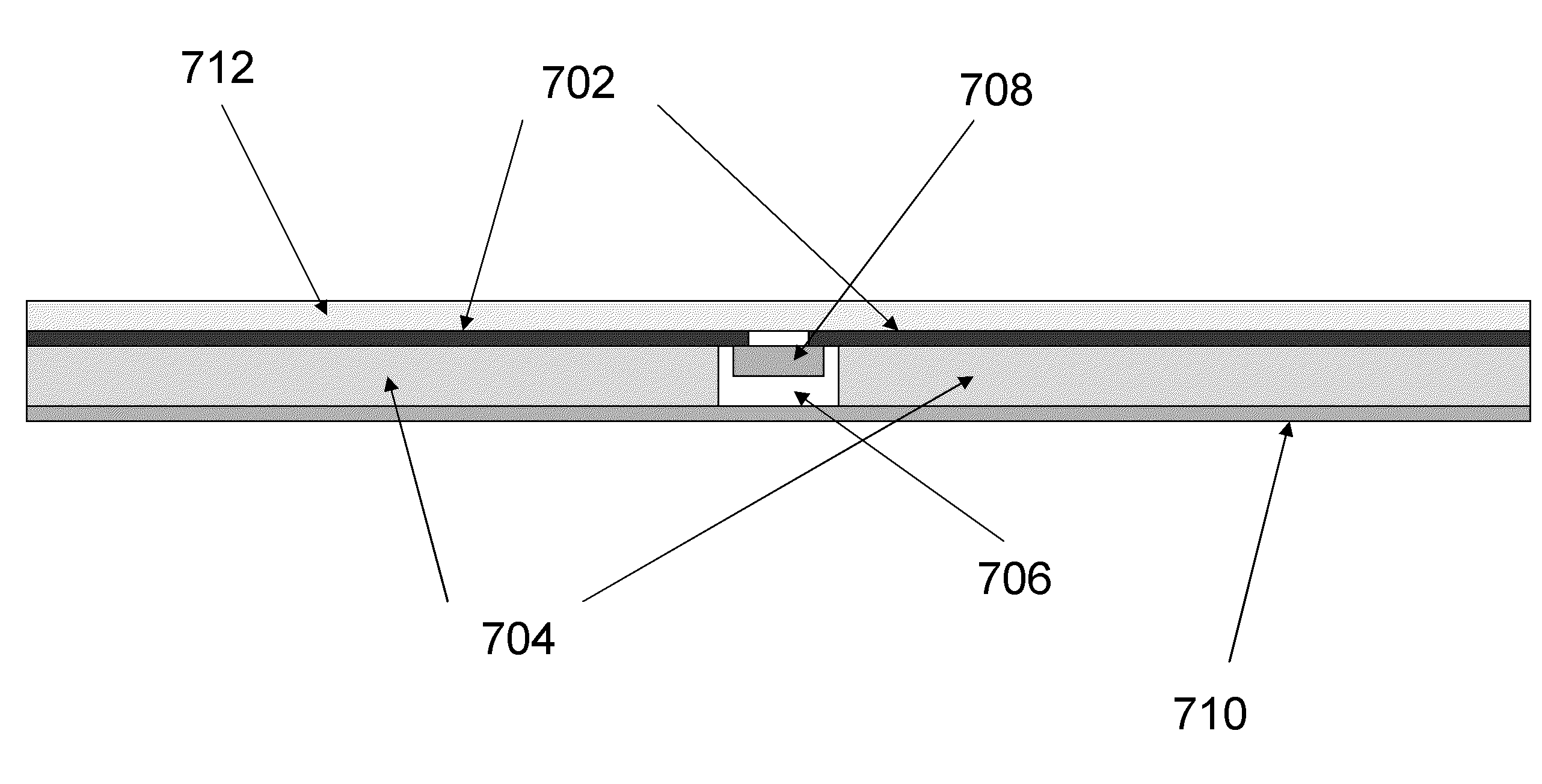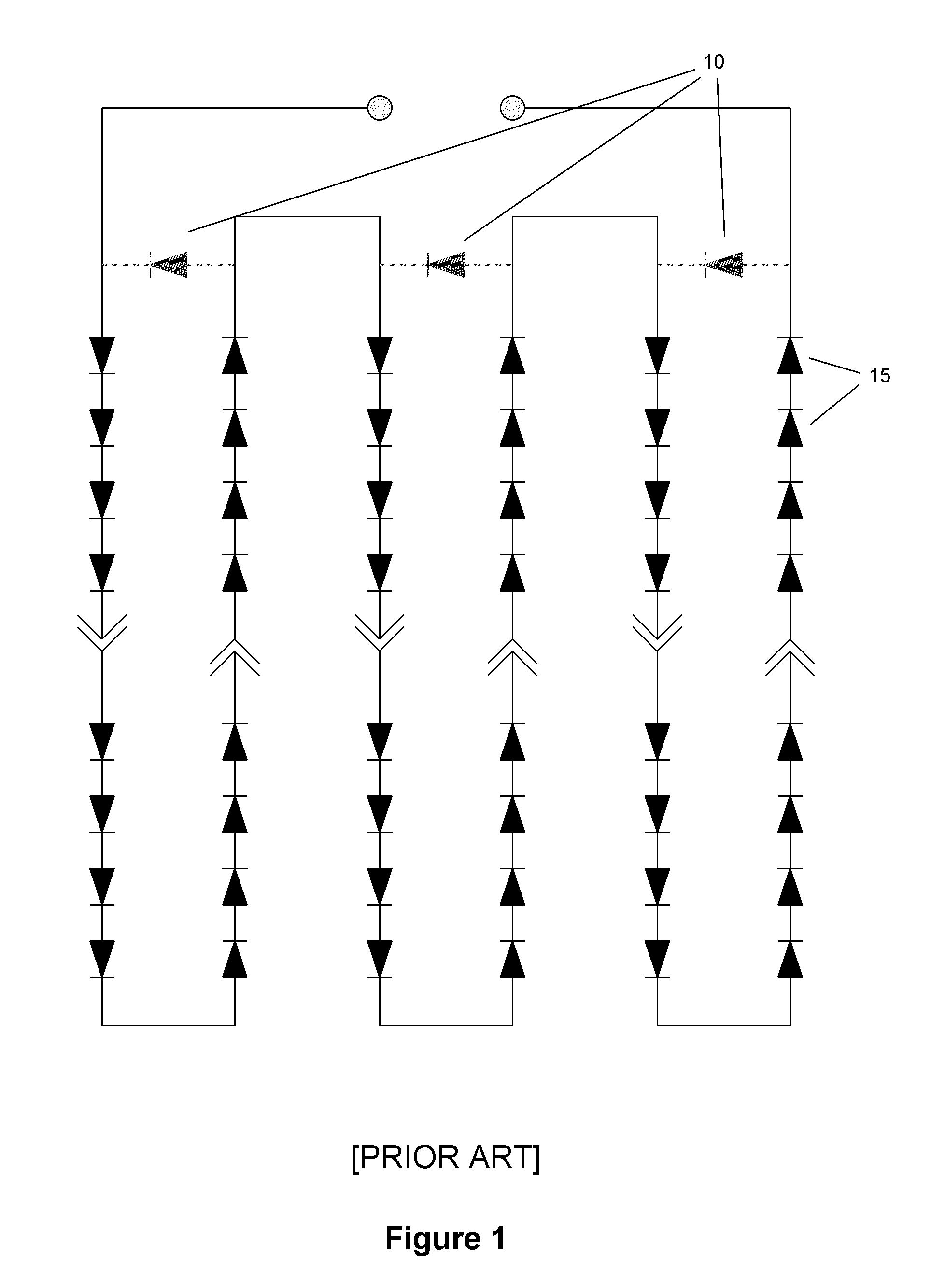Integrated bypass diode assemblies for back contact solar cells and modules
a solar cell and back contact technology, applied in the field of integrated bypass diode assemblies, can solve the problems of reducing the module performance in the system, introducing another field degradation problem, and affecting the output of the entire string,
- Summary
- Abstract
- Description
- Claims
- Application Information
AI Technical Summary
Benefits of technology
Problems solved by technology
Method used
Image
Examples
Embodiment Construction
[0030]The present invention improves the performance of a module by minimizing the impact of non-optimal operating conditions or degradation in individual solar cells on PV module output through the use of novel solar cell circuit geometries enabled by integration with the module assembly technology. The use of back-contact cells and a module backsheet with an electrical circuit (“flexible circuit”) wherein the module electrical circuit and the module lamination are performed in a single step are described in commonly owned U.S. patent application Ser. No. 11 / 963,841, entitled “Interconnect Technologies for Back Contact Solar Cells and Modules”. Flexible circuits may comprise multiple layers with conductive paths between layers that can enable complex circuit geometries. The simplest multi-level flexible circuit has an electrical circuit on both surfaces of the substrates. Alternatively, dielectric layers can be used for isolation between conductive layers.
[0031]Most crystalline-sil...
PUM
 Login to View More
Login to View More Abstract
Description
Claims
Application Information
 Login to View More
Login to View More - R&D
- Intellectual Property
- Life Sciences
- Materials
- Tech Scout
- Unparalleled Data Quality
- Higher Quality Content
- 60% Fewer Hallucinations
Browse by: Latest US Patents, China's latest patents, Technical Efficacy Thesaurus, Application Domain, Technology Topic, Popular Technical Reports.
© 2025 PatSnap. All rights reserved.Legal|Privacy policy|Modern Slavery Act Transparency Statement|Sitemap|About US| Contact US: help@patsnap.com



